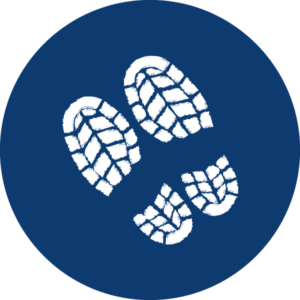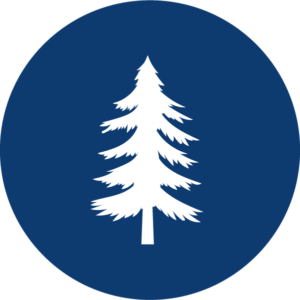
 Your Mission…
Your Mission…
To discover evidence of beaver! Find evidence of gnawed trees, deep ponded water, tracks, or a beaver slide-trail. Take a photo of your evidence and send to us!
Black Lake Meadows Reserve is in part a stormwater facility. This facility is associated with Yauger Park. As the stormwater overflows from Yauger Park, it is directed to the stormwater ponds located off RW Johnson Rd which eventually flow to the natural wetlands that make up the Black Lake Meadows Reserve.
KNOW BEFORE YOU GO!
Print this handy mission checklist before you leave!
![]()

 Welcome to Black Lake Meadows Reserve!
Welcome to Black Lake Meadows Reserve!
Please park in the small dirt lot near the railroad tracks. Follow the road into the reserve. Enter the reserve and follow the gravel road, looping along the banks of Black Lake Ditch and back to the main gravel road.
In the 1920’s Black Lake Ditch was developed by ditching a deep channel from Black Lake to Percival Creek through the wetlands. Black Lake Ditch starts at Black Lake and empties into Percival Creek, a tributary of the Deschutes River. Percival Creek flows into the Deschutes River which flows to Capitol lake and into Budd Inlet in Puget Sound.
Learn more about the Deschutes watershed in the Tumwater Historical Park Nature Sleuth’s game.

 Wildlife Habitat and Trees
Wildlife Habitat and Trees
As you enter the beginning of the loop, look for old dead trees, snags or rotten logs. Dead and dying trees are called snags. Snags are rotting, dead standing trees and dead trees lying on the ground. Snags provide homes for many animals; insects for birds to eat, homes for salamanders and nesting places for birds, squirrels and racoons. Some trees are still alive with broken tops. Broken topped trees provide homes for owls, squirrels and racoons and perches for owls and eagles. They are all part of a healthy forest. Eventually these decaying trees provide essential nutrients to the soil for other plants and trees to use.
Many small mammals call the reserve home. What other animals do you think live here? Can you find evidence?
Porcupines have also been spotted here. They’ve been seen standing in the trail for hours minding their own business. Porcupines like to gnaw on tender tree bark. They live in many parts of North America, Africa, and South America. Primary habitats include forests, deserts, and grasslands. In Washington State, porcupines occur mostly in forested areas, but also thrive along riparian zones and in brushy wetlands.
Coyote also live here. Can you sleuth out any animal evidence on the trail, like coyote scat (poop)?

 Nurse Stumps
Nurse Stumps
Have you seen any nurse stumps or logs? Nurse trees or nurse stumps provide nurseries for seeds to grow little trees. Can you find one with a large tree growing from it? They are also very important for adding nutrients to the soil and they provide homes for small animals, such as salamanders!

 Bats
Bats
What has five digits like a human hand, flies at night eating insects, looks like a mouse, but is not? A bat!
Bats naturally like to roost in holes or cavities of trees, under the bark of old trees and anywhere they can find cozy to keep them warm and dry. Many bats fly through the reserve on their way to feed on insects at Capitol Lake. It’s a long flight and they need places to rest so these boxes were installed for resting places and also to provide a large enough structure for a colony of bats to use as a nursery.
Can you find the manmade bat houses located high up a pole? They are tucked into the trees along the trail edge. Take a look at this constructed bat box. Notice how close the chamber are. They are only ½” wide! Native bats may look big when they spread their wings but are very small, about the size of an adult person’s thumb and weigh about 4 grams – as much as a nickel!
Bats need small, confined spaces for resting and keeping warm. They also need nursery sites to birth their young. In this house, 100’s of bats can huddle to stay warm. Did you know that most of the bats we see in our lower elevations in spring are all female waiting to birth young? The males stay in the higher elevations and the females come together to give birth to single pups.
Bat videos and sounds_blank

 Spirea and Wetlands
Spirea and Wetlands
The trail loops around a very large wetland. Much of the area has native woody plants such as spirea growing as well as willow trees. Both of these plants grow where there is a lot of seasonal standing water.
Wetlands are areas where the land does not drain well and is covered by water all or part of the year. Wetlands have different names based on their function and the types of plants they grow. There are four categories called marshes, swamps, bogs and fens.
The soils and plants in a wetland are different than those where it is dry. Plants growing in and near are water-loving plants called hydrophytes. Wetland soils are referred to as hydric because when water covers the soils for long periods of time it has less oxygen in it or is anaerobic and sometimes it has a sulfur-like odor.
Wetlands are very important as they provide habitat for thousands of species of aquatic (water) and terrestrial (land) plants and animals. They also provide flood control, filter and clean water and store water in the ground (ground water or aquifer) that provides us with drinking water and our streams with water. Wetlands are also the world’s best ecosystems for capturing and storing carbon from CO2.
These habitats are essential for migratory birds and this trail is a well known spot for birding. Visit ebird and see if you can find any of the birds on the list!
![]()
 Beavers
Beavers
Follow your nose up the trail to the smell of fresh water! Notice any flooded water, slippery trails and gnawed trees?
Who lives here? Beaver!
Beavers play a very important role in maintaining a healthy ecosystem and creating wetlands. Before Europeans came to North America it is estimated that there were 100-400 million beavers! Now there are only 6-12 million beaver. Can you imagine how having fewer beaver has changed our landscape and the storage of ground water?
FACT! Beavers are such incredible engineers that they are being used to restore streams and rivers.
 Black Lake Meadows Stormwater Treatment
Black Lake Meadows Stormwater Treatment
Did you know? Stormwater running off the streets after a rain in west Olympia eventually makes its way to the wetlands at Black Lake Meadows? Black Lake Meadows is part of the Yauger Park stormwater treatment facility. The key function of Yauger Park is to reduce pollution and flooding of Olympia’s streets.
When Yauger Park fills with stormwater or reaches capacity, it then drains into a series of ponds and wetlands piped to RW Johnson Road and eventually into the natural wetland at Black Lake Meadows Reserve where it is cleaned of pollutants before finding its way to the stream and Puget Sound. Check out this map to see how the stormwater pipes all connect to the reserve!
Where does all of this water come from? When natural areas are developed into urban areas, rainwater can no longer easily soak into the ground. Things like rooftops, sidewalks, and pavement do not allow water to filter into the ground, causing the water to runoff and potentially cause flooding. Anything that doesn’t allow water to pass through into the ground is referred to as an impervious surface. In the urban area, there are more impervious surface areas than there are in natural areas, so without having a functioning stormwater plan, roads and urban areas would flood.
 Congratulations!
Congratulations!
You have completed your mission to discover evidence of beaver! Don’t forget to login to the Goose Chase App and submit your photo of gnawed trees, deep ponded water, tracks, or a beaver slide-trail to collect your park specific sticker!
